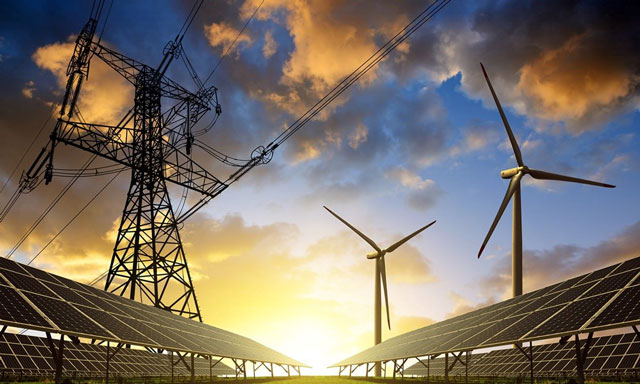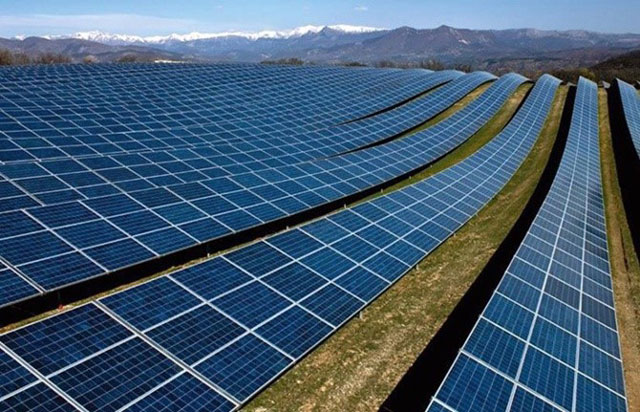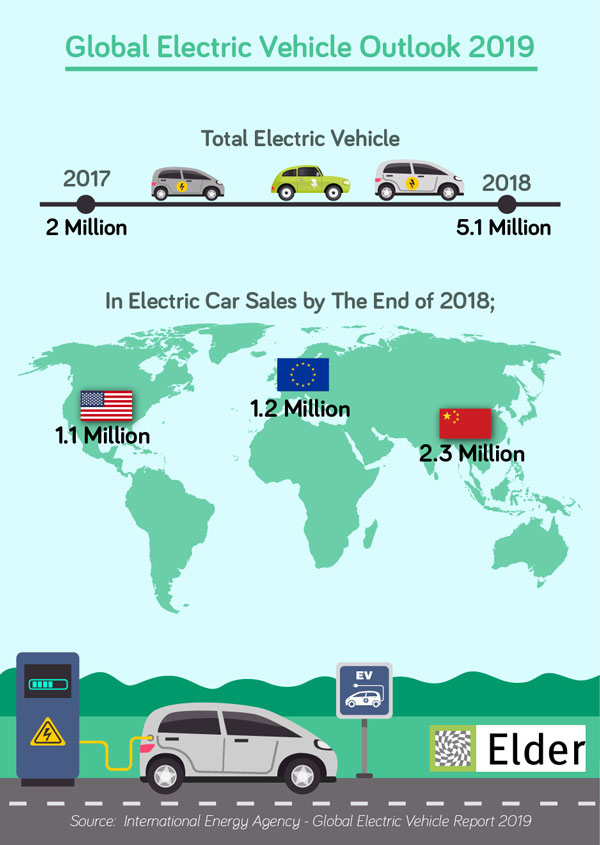
“Use of SF6 Gas in Electricity Sector” project financed by the European Union (EU) and supported by the Ministry of Treasury and Finance in Turkey will lead the way for the preparation of new legislation.
Turkey’s Association of Electricity System Operators (ELDER) in cooperation with the partners of the project will contribute to reduce the carbon foot print created by the electricity sector.
As the SF6 gas is among the greenhouse gas emissions and cause climate change, the project is aimed to create awareness about the harmfulness of it.
In the context of the project, Turkey and EU will prepare a draft report on the process, tracking and conversion of SF6 gas and the report will be submitted to the governmental institutions.
Furthermore, there will be some meetings to analyze the local and national politics about the processes of SF6 gas.
The project will also contribute for the awareness of the public. The partners of the project will try to inform people about what is carbon foot print and how to reduce it for fighting against climate change.
The partners of the projects including directorates from Ministry of Foreign Affairs, Ankara Chamber of Industry, ELDER, AGED, ECOM and Chamber of Enviroment Engineers had an opening meeting of the project in Ankara.

Turkey produced 89 percent of its electricity from domestic and renewable resources on June 5, according to the Energy and Natural Resources Ministry.
The ministry's statistical data shows that Turkey produced a total of 543.46 million kilowatt-hours (kWh) of electricity on June 5. Hydroelectric plants supplied the largest share with 59.98 percent of the total, equivalent to 325.96 million kWh.
Local coal plants contributed 18.57 percent to electricity generation, wind plants supplied 3.53 percent, and natural gas power plants added 5.95 percent, while 5.24 percent was supplied by of plants that run imported coal. The remaining 6.73 percent was generated from geothermal, fuel oil and biogas plants.
In total, Turkey produced 88.81 percent of its electricity from local and renewable resources on June 5. On the same day, Turkey consumed 534.57 million kWh of electricity.
Last year, on the same day Turkey produced 33.11 percent of electricity from natural gas, 18.36 percent from imported coal.
Local and renewable resources had only 48.53 percent share in electricity production. Turkey's total installed power capacity reached 89.68 gigawatts (GW) by the end of April 2019, according to official figures.
Meanwhile, the country managed to increase its electricity production from local and renewables sources in the first quarter of 2019 to 62 percent compared to 48.5 percent during the same period of last year, according to official data.
It produced 74.25 billion kWh of electricity in the first quarter of this year, of which 46.11 billion kWh came from local and renewable energy resources.
Energy and Natural Resources Minister Fatih Dönmez said earlier in March that the country aims to produce 60 percent to 70 percent of its electricity from renewable and local resources.
Source: Daily Sabah

A new report from BP suggests that recent progress on this front has been slow. In its annual statistical review of world energy, the British oil firm finds that the world’s power sector is spewing out ever more CO2.
Overall emissions of greenhouse gases increased by 2% in 2018. In the power industry, emissions rose by 2.7%, the biggest increase in seven years. This was driven by a high number of days that were either unusually hot or cold, which boosted energy demand. Without a more sustainable energy mix, the low-carbon future Mr DiCaprio envisions will be a thing of Hollywood.
There are some grounds for optimism. Data from the International Energy Agency (IEA), an intergovernmental group, show that the carbon intensity of the power sector—the amount of carbon dioxide emitted for each unit of electricity generated—has fallen by 10% since 2010.
That is in part because the use of renewable energy, including solar and wind, is up. Of the 78 countries tracked by BP, three-quarters have some form of renewable power, up from just a third twenty years ago.
To make meaningful progress, however, renewable electricity production will have to keep pace with global energy demand, which jumped by 3.7% in 2018. Producers will also have to do more to remove coal, easily the dirtiest of the fossil fuels, from the electricity grid.
Coal-fired power plants still supply more than a third of the world’s power (see map).
In 2018, coal-based output increased for the second consecutive year, following three years of declines.
Source: Economist

Wind and solar are neck and neck as the technology of choice this year among corporations signing power purchase agreements for clean energy.
Globally, companies have signed deals for 2.8 gigawatts of solar and 2.8 gigawatts of wind to the end of May, according to our Corporate PPA Deal Tracker for May 2019.
Corporations signed 11 power purchase agreements last month for 1.29 gigawatts of clean energy, bringing the total for 2019 thus far to 5.7 gigawatts by volume.
The Americas continues to dominate, accounting for 86% of purchases this year and 69% of all deals signed since 2008.
Source: BNEF

The global smart meters market is estimated to be worth US$7.06bn in 2023, increasing from US$5.8bn in 2018, according to GlobalData, a leading data and analytics company.
The company’s latest report “Smart Meters, Update 2019 – Global Market Size, Competitive Landscape And Key Country Analysis o 2023” reveals that this growth will be driven by evolving information and communications technology (ICT) standards, entry into new markets, replacement of outdated meters: both advanced metering infrastructure (AMI) and traditional, new infrastructure development, and peak load and asset management.
Energy transition in countries, grid resilience enhancement, mandates, and infrastructure upgrades are the primary factors driving the deployment of smart meters. Despite the decline in installations, China will continue to be the largest market, with installation likely to reach an aggregate of 144 million over the forecast period.
Nirushan Rajasekaram, Power Analyst for GlobalData comments: “China is the largest market for smart meters and is likely to continue leading the market. Over the forecast period, the focus will shift towards replacing old meters, propelling the market growth at a compound annual growth rate (CAGR) of 5%. The growing demand for power and increasing penetration of renewables in the grid will necessitate the need for a sophisticated and reliable energy supply system.”
Japan and the US will continue to upgrade their grid for enhanced weather resilience and will see their market reach US$0.54bn and US$0.26bn, respectively by 2023. Japan and the US are driving technology integration to enhance the resilience of the grid. Poor domestic energy resources and fossil fuel price volatility are pushing the Japanese government to deploy efficiency measures, renewables, and other disruptive technologies, which are making grid operations more complex and variable. In the US, the aging grid is driving modernization initiatives across the country, with federal investment programs established to encourage utilities to deploy smart meters. With the larger utilities in the US and Japan nearing rollout completion, the aggregate smart meter installations is expected to decline to 20.2 million and 29.3 million, respectively over the forecast period.
In Europe, the EU mandate for smart meter rollout will push for large scale deployment in the UK and France. The installations in the UK are expected to accelerate, with the successful deployment of second generation communications platform for smart meters. Meanwhile, France is expected to adhere to its rollout plan and will accomplish its rollout by 2021.
Rajasekaram concludes: “Emerging technologies such as solar PV, battery storage and EVs are disrupting the linearity of power flow, leading to the formation of an intricate, non-linear interconnected grid at the distribution level. Using smart meters and suitable communications technology, generation and consumption trends are made available to utilities, allowing them to act efficiently.
“Moreover, smart meters enable the flow of information on surge pricing, demand response, and enhance billing transparency. Smart meters will be integral in building robust grids, support infrastructure retrofits, decrease redundancies, enhance utility operations and performance, and increase revenue.”
Source: Informed Infrastructure

Spanish multinational utility Iberdrola has filed a proposal with the Ministry for the Ecological Transition to build a 590MW solar photovoltaic plant.
If approved, the Francisco Pizarro project will be developed in Extremadura, for more than €300 million and will employ up to 1,000 people during construction.
The solar plant is expected to be operational in 2022 to power more than 375,000 people and will prevent the emission of 245,000 tons of carbon every year.
The system will be larger than the Núñez de Balboa photovoltaic plant that Iberdrola is building in Usagre (Badajoz) which, with 500 MW, is so far the biggest in Europe.
The project is part of the utility’s plan to strengthen its clean energy generation by installing an additional 10,000MW and create 20,000 jobs by 2030.
Iberdrola has more than 2,000MW of renewables under construction and processing in Spain.
The utility is the biggest producer of wind energy in Spain, with installed power of 5,770 MW, while its total installed renewable capacity, including both wind and hydroelectric, is 15,790 MW. The company has a total of almost 30,000 MW installed capacity around the world.
The activities underway are part of the clean energies relaunch plan designed by Iberdrola in Spain, entailing an investment of 8 billion euros between 2018 and 2022 and commissioning 10,000 new MW until 2030.
Source: Smart Energy International
Global Economic Prospects
Global growth has continued to soften this year. Subdued investment in emerging market and developing economies (EMDEs) is dampening potential growth prospects. Risks to the outlook remain firmly on the downside, including the possibility of escalating trade tensions. Another concern is rising debt, which may make it difficult for EMDEs to respond to adverse developments and to finance growth-enhancing investments. Reforms to boost private investment and productivity growth are needed, particularly in low-income countries, which face more significant challenges today than they did in the early 2000s.
Please click here to read the full report.

